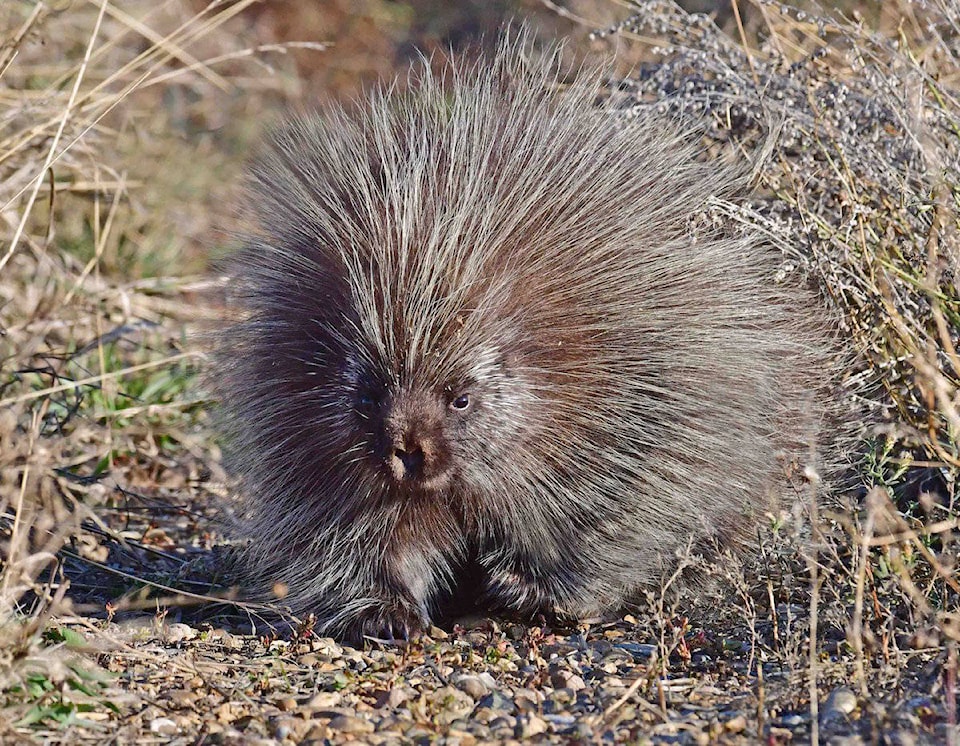A balled up porcupine showing its quills is no match for a two-ton truck.
The impact of this wildlife-vehicle collision is not pretty: Naturalist Myrna Pearman said she has seen several squished porcupines by the side of highways this fall.
“They don’t defend themselves, aside from putting up their quills,” Pearman added. “And they’re slow moving. They just kind of sit there in the road, waiting for cars to pass.”
While she’s not exactly sure why porcupines are making up a noticeable proportion of this year’s roadkill, Pearman said the younger ones are heading out on their own this time of year, not fully prepared for the big, cruel world — or for highway crossings, in any case.
Motorists should be extra watchful as animals, including deer and moose, get a move-on in preparation for the fall rutting season and approaching winter.
“Love is in the air,” said Pearman, executive-director of the Ellis Bird Farm. She noted male deer or moose, with their eerie cries, aren’t necessarily thinking of vehicle danger when they cross roads in pursuit of potential mates.
Deer are particularly abundant this time of year, added Red Deer River Naturalists member Judy Boyd, so “drivers should be cautious” — particularly at dawn or dusk.
Boyd, who volunteers at the Medicine River Wildlife Centre, recently took in an injured great horned owl, who might have been swooping low for a mouse or vole and underestimated the speed of an on-coming car or truck.
She said vehicular traffic, power lines and barbed wire fences cause the most owl injuries and deaths.
Coincidentally, one of the two web-cam-ed owls at the Ellis Bird Farm was recently found deceased.
Pearman said it’s not known yet whether it is Ellie or Albert. A post-mortem is being done to try to figure out the cause of death. “It might just be old age,” she added.
Although owls had a tough time last winter because of a lack of food (some of the mice population died off because of an early cold snap, and the rest later hid under a hard crust of snow), Pearman does not believe starvation should be a factor, since she noticed a lot of voles last summer.
She does hope a new owl will come around to befriend the widow/widower.
Some dramatic changes have already been noticed in wildlife in preparation for winter: The weasels are pure white, she said, while the hares are slowly turning white, from their feet up. Pearman also just saw her first snowy owl, which migrated down to Saskatchewan a little early from the Arctic.
So does this mean we are due to have a fast-approaching winter and deep snowfall?
Not necessarily, said Pearman since the hair on wildlife usually changes colour depending on the length of daylight hours.
lmichelin@reddeeradvocate.com
Like us on Facebook and follow us on Twitter
